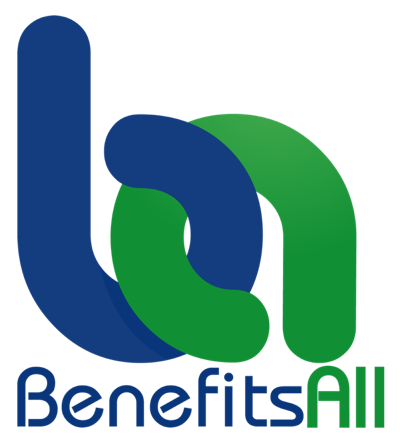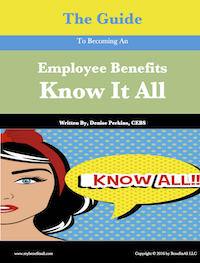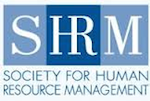Five Steps to a Better New Hire Benefits Orientation
February 20, 2014

Many employees have a negative opinion of the new hire orientation; especially the employee benefits session. They're too long, too boring and just too much! As one of the casts of HR characters charged with meting out this torture, you probably have the same negative feelings. Or maybe your feelings are not as strong. You know that if you did not have these sessions, new hires would never submit the required enrollment forms (online or otherwise) on time.
However, the primary purpose of the new hire orientation is not to collect paperwork. Sure, that is an important function of the process, but the main point is to help employees make well-informed financial decisions about health insurance and retirement savings. So, if your job requires you to educate new employees about employee benefits, make sure you are up to the task. Here’s how you can prepare…
1. Attend a Colleague's Benefits Orientation
As a new employee benefits professional, part of your training may include watching a supervisor or coworker lead a new hire benefits orientation. You can learn a lot from this training. The key is to look for things worth incorporating into your future orientations, but also items you definitely want to avoid.
Some employee benefits are naturally more confusing than others. Pay special attention to how new hires react to these segments of the orientation. Do they look confused? Do they ask questions? Revised these segments to make them easier to understand.
Also, pay attention to the rhythm and tone of the session. Is it engaging? At what stage of the orientation do employees begin to lose interest? This may give you an idea of the amount of time you should devote to the orientation. Should it be 30, 45, or 60 minutes long or longer?
Watching others lead a new hire benefits orientation provides valuable lessons on what to do, what not to do, what to cover and for how long.
2. Read Everything
Before conducting my first new hire benefits orientation I memorized the two-page benefits summaries prepared by the insurers for our medical, dental, life and disability insurance plans. And the plan booklet prepared by the retirement plan administrator. This was all the information provided to me by my supervisor, so I assumed it was all that I needed and all that was available.
The first few benefits orientations went well. I appeared to know what I was talking about and was able to answer all questions thrown my way. That is until someone asked me what 401(k) stood for. I told him it was a type of retirement plan that the firm offered in addition to our defined benefit pension plans. Correct, but it did not answer his question. I proceeded to tell him the mechanics of it when he cut me off and said, "yeah, but what does it mean."
I am no dummy. I immediately detected that this person knew exactly what it stood for and knew that I did not. Of course, he was happy to tell me and all the other new hires that it referred to Section 401(k) of the Internal Revenue Code. I lightened the mood with a joke, ten days out of college you would think I would know all of these things.
I knew I had to learn more. I discovered the plan documents and summary plan descriptions (SPD) that provided detailed information about the plans including what was not covered. I also read old plan brochures, open enrollment and other benefit program announcements to see how the firm's benefits program evolved over the years. You would be surprised how many employees think they are enrolled in plans that were discontinued years ago.
The best way to prepare for a benefits orientation is to read all of the plan documentation. It is also a good idea to read general health insurance and financial information from government and private online publications and websites. There is no shortage of related newsletters, RSS feeds, and blogs, etc., you can subscribe to.
3. Lighten Up
Even after conducting benefits orientations for years, you may get a little nervous before each session. Public speaking is a fear shared by many people. So, allow for some nerves, but rely on your knowledge and your desire to help others to overcome your fears. Also, consider that new hires are probably just as amped up as you are. Chances are they are learning about health and life insurance and retirement plans for the first time and may find the material intimidating. It's your job to make them feel relaxed and ready to learn.
And one of the best ways to set a relaxing mood is to smile. Not only will smiling relieve your stress it will convey to others that you are happy and confident, which may in turn make them feel the same way. However, you may not want to smile too much as it can have the opposite effect. It can make others feel uncomfortable and make you look unprofessional.
A new hire benefits orientation is not a funeral service. If your presentation is stiff and stoic, employees may find it difficult to concentrate on what you are communicating. Create a professional but friendly and engaging atmosphere for every orientation.
4. Provide Examples and Comparisons
Most benefits professionals are taught to recite a general laundry list of health and retirement plan rules and definitions as the main part of our benefits orientation. I was guilty as the next benefits pro of waiting for a new hire to ask a specific question before providing a real world example of how Plan A works in a given situation. Not providing these examples and comparisons upfront is one of the main reasons new hire benefits orientations are unsuccessful.
New hires cannot possibly make a wise decision about which health plan to choose or how to calculate their approximate out-of-pocket costs by listening to a list of what's covered and deductible, coinsurance and copay amounts. They need an example using a specific health care occurrence. Fortunately, the new Summary of Benefits Coverage (SBC) documents required by the Affordable Care Act for all health plans provide these types of coverage examples and comparisons. There are also online coverage calculators to calculate the out-of-pocket costs of different plans.
When reviewing benefit plan information, provide examples of how the benefits work in the real world. Don't just recite a list of benefit plan features.
5. Follow-up
After the new hire benefits orientation you will inevitably have to follow-up with some new hires to remind them to make a benefit plan election. Many benefits pros grumble about having to perform this task because they fail to understand the value of the following up. To them it is all about collecting paperwork and processing benefit plan elections. They fail to see it as opportunity to answer specific questions so the employee has an even better understanding of their options. In other words, the follow-up is where the real education takes place.
Following up with new hires after the benefits orientation is as important as the orientation itself. Consider scheduling a one-on-one session with new hires to answer their specific questions and help them make their benefit elections. This may seem like a doubling of the work but could actually save time and effort during the annual open enrollment period. When new hires have their specific benefit plan needs addressed from the very beginning, they are better prepared to make similar types of decisions in the future.
In conclusion, conducting a benefits orientation is not about impressing people with your performance, it is about helping employees make wise financial decisions. Preparing for this important work takes effort. Observe other orientations. Read all plan info. Set the right mood. Provide examples. Follow-up.
blog comments powered by Disqus


 Denise Perkins
Denise Perkins




